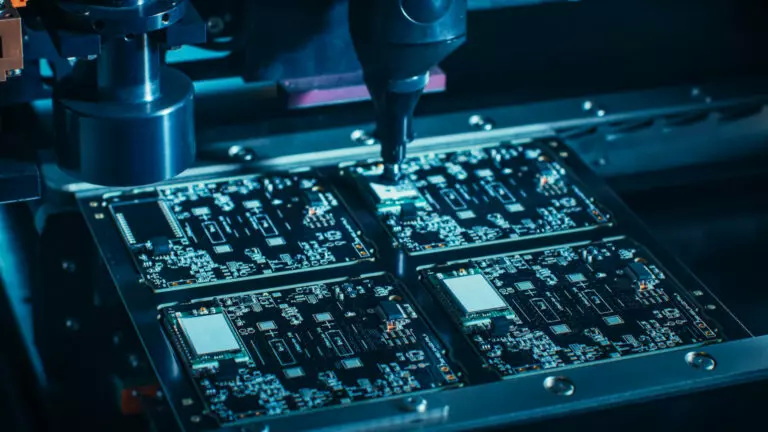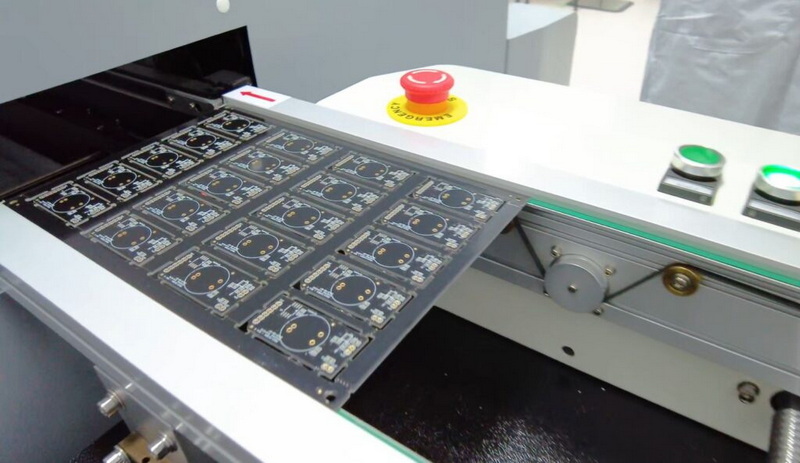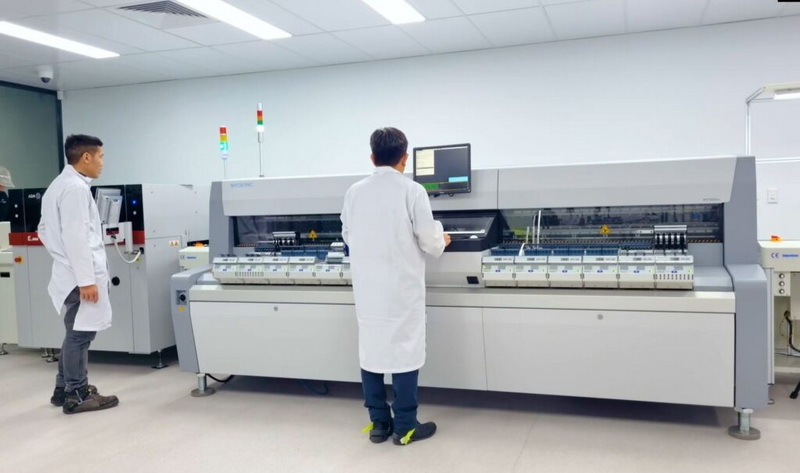Content Menu
● Component Placement Accuracy
● Solder Paste Application
● Reflow Soldering Issues
● Defects During Assembly
● Material Handling Challenges
● Equipment Maintenance and Calibration
● Supply Chain Management
● Workforce Training
● Quality Control Measures
● Solder Joint Reliability
● Testability Issues
● Conclusion
● FAQ
>> 1. What is Surface Mount Technology (SMT)?
>> 2. What are common defects encountered during SMT assembly?
>> 3. How does temperature affect reflow soldering?
>> 4. Why is component placement accuracy important?
>> 5. What steps can be taken to improve quality control in SMT assembly?
● Citations:
Surface Mount Technology (SMT) has transformed the landscape of electronics manufacturing, enabling the assembly of compact and complex printed circuit boards (PCBs). While SMT offers numerous benefits, such as increased component density and reduced production costs, it also presents a range of challenges that can impact the efficiency and quality of the assembly process. This article delves into these challenges and provides insights into effective solutions.

Component Placement Accuracy
Accurate placement of components is essential in SMT assembly. As components shrink in size and become more densely packed, the tolerance for error diminishes.
- Challenge: Misalignment can lead to short circuits or open circuits, compromising the functionality of the PCB.
- Solution: Investing in high-precision placement machines equipped with advanced vision systems can significantly enhance placement accuracy. Regular calibration and maintenance of these machines are crucial. Additionally, training operators on the importance of precise placement can further reduce errors.
Solder Paste Application
The application of solder paste is a critical step in the SMT process. Insufficient or excessive solder paste can lead to various defects.
- Challenge: Inconsistent solder paste application can result in weak solder joints, tombstoning, or bridging.
- Solution: Utilizing high-quality stencils tailored for specific PCB layouts and implementing automated solder paste inspection (SPI) systems can improve consistency. Regular cleaning and proper alignment of stencils are also vital to ensure optimal paste deposition.
Reflow Soldering Issues
Reflow soldering is where solder paste is melted to create permanent connections between components and the PCB.
- Challenge: Insufficient heat during reflow or improper temperature profiles can lead to cold solder joints or insufficient solder joints.
- Solution: Monitoring and adjusting reflow oven settings based on real-time feedback is essential for optimal soldering conditions. Implementing a robust quality control system that includes thermal profiling can help minimize defects.
Defects During Assembly
Various defects can occur during the SMT assembly process, including:
- Solder Bridging: Excess solder creates an unintended connection between two pads, leading to short circuits.
- Tombstoning: A defect where one end of a component lifts off the PCB during reflow due to uneven heating or improper paste application.
- Cold Joints: Occur when solder fails to melt properly, resulting in weak connections.
- Solution: Continuous monitoring using Automated Optical Inspection (AOI) systems can help identify defects early. Training personnel to recognize and address these issues proactively is also important.
Material Handling Challenges
The handling of materials used in SMT assembly is another area fraught with challenges.
- Challenge: Components are often sensitive to moisture and static electricity, which can damage them if not handled properly.
- Solution: Implementing strict material handling protocols, including humidity control measures and anti-static precautions, is essential for maintaining component integrity throughout the assembly process.
Equipment Maintenance and Calibration
Maintaining and calibrating SMT equipment is crucial for ensuring consistent performance.
- Challenge: Over time, machines can drift out of calibration, leading to increased defect rates.
- Solution: Establishing a regular maintenance schedule for all equipment used in the SMT process will help keep machines operating at peak efficiency. This includes routine checks and recalibrations based on manufacturer specifications.

Supply Chain Management
The complexity of modern electronics often requires a diverse range of components from various suppliers.
- Challenge: Delays or inconsistencies in component supply can disrupt production schedules and affect product quality.
- Solution: Developing strong relationships with suppliers and maintaining an adequate inventory of critical components can help mitigate supply chain risks. Implementing just-in-time inventory practices may also improve efficiency while reducing excess stock costs.
Workforce Training
As technology evolves, so too must the skills of the workforce managing SMT processes.
- Challenge: Keeping staff trained on new technologies and processes is essential but can be resource-intensive.
- Solution: Regular training sessions that focus on both technical skills and quality assurance practices will help ensure that all employees are equipped to handle the latest advancements in SMT technology effectively.
Quality Control Measures
Ensuring high-quality output is paramount in any manufacturing operation, especially in electronics where failures can have significant repercussions.
- Challenge: Identifying defects early enough to prevent costly rework or product failures in the field is challenging due to the rapid pace of production.
- Solution: Implementing a comprehensive quality management system that includes regular audits, inspections at various stages of production, and feedback loops for continuous improvement will enhance overall product quality.
Solder Joint Reliability
Solder joint reliability is critical for ensuring long-term performance in electronic devices.
- Challenge: Factors such as thermal cycling, mechanical stress, and environmental conditions can lead to joint failure over time.
- Solution: Using appropriate solder materials designed for specific applications, along with rigorous testing under simulated conditions (like thermal cycling tests), helps assess joint reliability before mass production begins.
Testability Issues
As PCBs become more complex with higher component densities, ensuring testability becomes a significant challenge.
- Challenge: Complex designs may hinder access to test points necessary for quality assurance checks after assembly.
- Solution: Designing PCBs with built-in test points that facilitate easy access for probes during functional testing helps ensure reliability without compromising design integrity.
Conclusion
Running an SMT PCB assembly line involves navigating a complex landscape filled with challenges ranging from component placement accuracy to supply chain management. By understanding these challenges and implementing effective solutions—such as investing in advanced technology, enhancing workforce training, maintaining rigorous quality control measures, and fostering strong supplier relationships—manufacturers can optimize their operations for improved efficiency and product reliability. The evolution of SMT technology continues to shape the electronics industry, making it imperative for businesses to adapt proactively to maintain competitiveness in this fast-paced environment.
Through careful planning, continuous improvement efforts, and adherence to industry standards such as IPC guidelines, manufacturers can mitigate many common defects associated with SMT processes while enhancing overall production yields. This proactive approach not only improves product quality but also fosters customer satisfaction by delivering reliable electronic devices that meet market demands effectively.

FAQ
1. What is Surface Mount Technology (SMT)?
Surface Mount Technology (SMT) refers to a method used to mount electronic components directly onto the surface of PCBs rather than inserting them through holes as done in traditional methods like Through-Hole Technology (THT).
2. What are common defects encountered during SMT assembly?
Common defects include solder bridging, tombstoning, insufficient solder joints, cold joints, non-wetting issues, and missing components which can all affect circuit functionality if not properly managed.
3. How does temperature affect reflow soldering?
Temperature plays a crucial role in reflow soldering; improper temperature profiles can lead to cold joints or insufficient melting of solder paste resulting in weak electrical connections.
4. Why is component placement accuracy important?
Accurate component placement ensures electrical connectivity; misaligned components can cause short circuits or open circuits which compromise device functionality.
5. What steps can be taken to improve quality control in SMT assembly?
Implementing automated inspections at various stages of production, conducting regular audits, providing staff training on quality assurance practices, and establishing feedback loops for continuous improvement are effective strategies for enhancing quality control.
Citations:
[1] https://www.viasion.com/blog/common-challenges-in-smt-assembly-and-solutions/
[2] https://www.pcb-hero.com/blogs/lisas-column/surface-mount-technology-common-problems-and-solutions-for-efficient-smt-assembly
[3] https://resources.altium.com/p/common-pcb-assembly-defects-you-should-know
[4] https://jhdpcb.com/blog/efficient-smt-assembly/
[5] https://www.bigmateph.com/what-are-the-common-challenges-of-smt-and-how-to-overcome-it/
[6] https://www.youtube.com/watch?v=64w1uH8FkcM
[7] https://fctassembly.wordpress.com/technical-resources/technical-papers/smt-assembly-challenges-and-proven-solutions-for-improving-yields/
[8] https://www.electronicdesign.com/technologies/eda/printed-circuit-boards/article/55041417/viasion-technology-top-5-miniaturization-challenges-in-pcb-assembly-and-their-solutions
[9] https://www.vse.com/blog/2022/03/15/8-common-smt-placement-issues-and-solutions/
[10] https://www.protoexpress.com/blog/common-errors-surface-mount-technology-smt/
[11] https://www.pcbjhy.com/blog/pros-and-cons-of-smt-pcb-assembly/




















